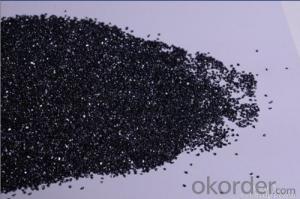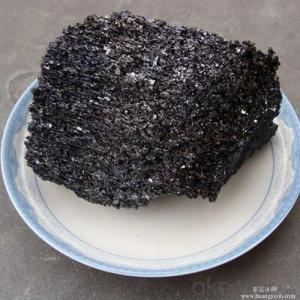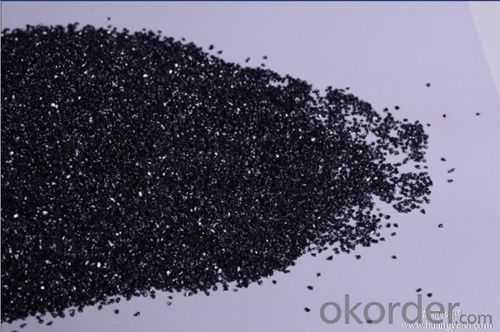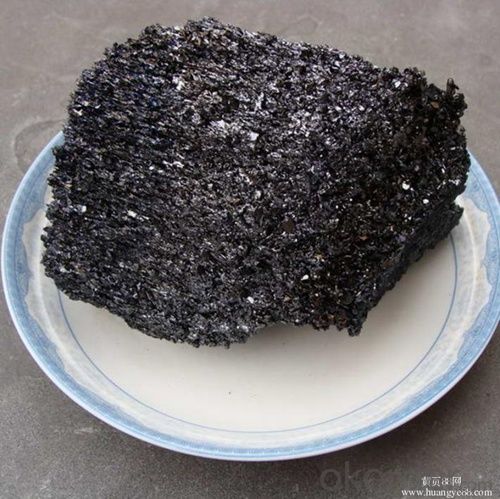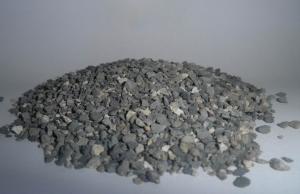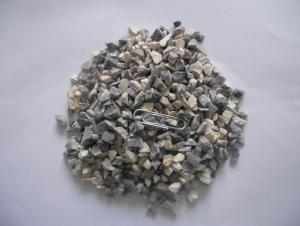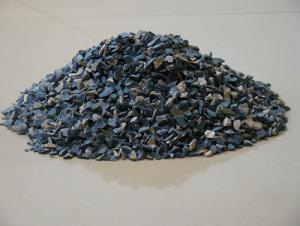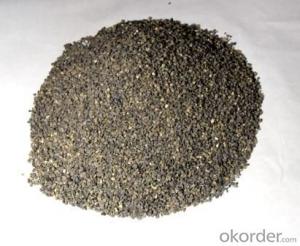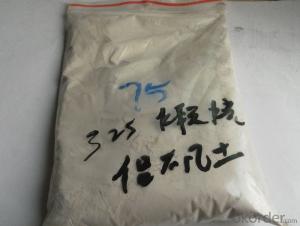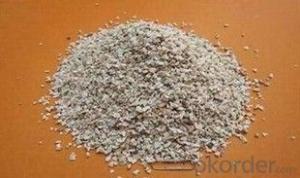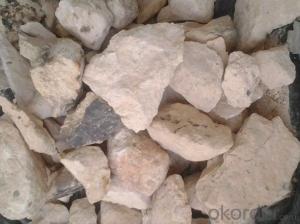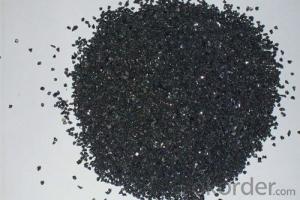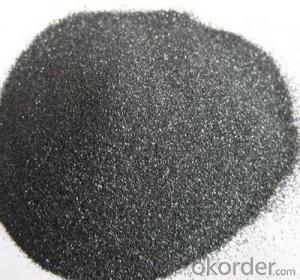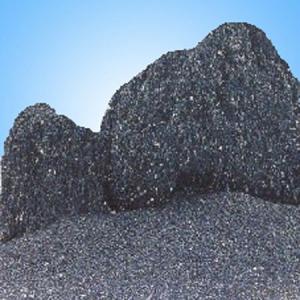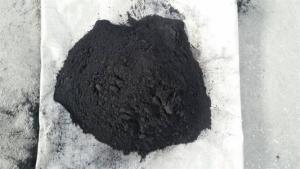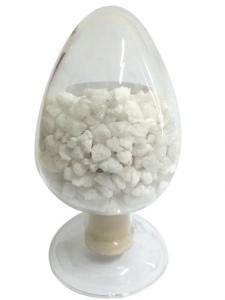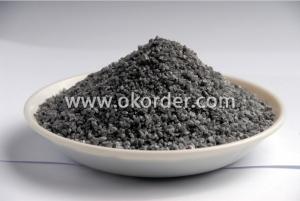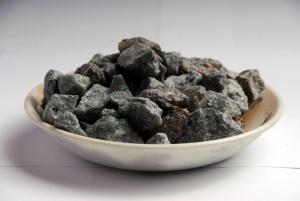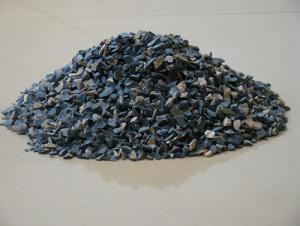Raw Materials for Refractory - Silicon Carbide/Black Silicon Carbide with High Quality
- Loading Port:
- China main port
- Payment Terms:
- TT OR LC
- Min Order Qty:
- 25 m.t.
- Supply Capability:
- 2000 m.t./month
OKorder Service Pledge
OKorder Financial Service
You Might Also Like
Product Description
1. Description
Black silicon carbide is produced at high temperature in an electric resistance type furnace with
quarts sand and petroleum coke as its main raw materials. Its hardness is between fused alumina
and synthetic diamond. Mechanical intensity of it is higher than fused alumina. It is sharp and
has electrical and heat conductivity in some degree.
2. Partical Size
Lumps: 0-20mm, 0-50mm.
Grains: 0-1mm, 1-3mm, 3-5mm, 5-8mm, 0-5mm, 0-10mm, 1-10mm, etc.
7/14, 14/30, 36/70, etc.
-100mesh, -200mesh, -325mesh, etc.
Grits: F12-90, F100-240.
Micropowder : F 280-600.
*Note: the size can be based on customer’s requirement.
3. Packing
In 1mt big bag. Or 25kg bags be packed into 1mt big bag. Also can be based on customer’s
requirement.
4. Specification
SIC98.5%, SIC98%, SIC97%, SIC95%, SIC90%, SIC88%, SIC85%, SIC80%, SIC75%, SIC70%, SIC65%, SIC55%, SIC50%

Our Service:
1. Your inquiry related to our products or prices will be replied in 24hours.
2. Manufacturer with large capacity, ensure the fast production cycle after confirmed the order.
3. Our professional technicians will answer your entire enquiry in patient.
4. To meet the refractory solutions, we can serve as your instructions.
5. Protection of sales area and private information for our entire customer.
If you’ve kind enquiries, please don’t hesitate to let us know. ^_^
- Q: Who knows what is the standard of insulation material whose fire proof is level A?
- Fire insulation materials of level A is non combustible building materials, and does not have any burning material. Level A1: single inorganic non combustible, no open flame. Level A2: A2 level: composite organic non combustible, that is, composite materials, non flammable, smoke volume should reach the standard.
- Q: Are the specification of fireclay bricks and ordinary clay brick the same?
- Do you want to know whether the specifications of fireclay bricks and ordinary clay brick are the same?
- Q: What are included in roof thermal insulation fireproofing material?
- Aluminium foil, bubble, aluminium foil/air bubbles/fireproofing aluminium foil thermal insulation material, fireproofing bubble thermal insulation material, fire?retardant thermal insulation material, thermal insulation construction materials, aluminum foil insulation material.
- Q: What are the characteristics of thealuminium oxide refractory?
- Physical properties of refractories include structural properties, thermal properties, mechanical properties, performance and job performance. The structural properties of refractories include porosity, bulk density, water absorption, air permeability and pore size distribution. The thermal properties of refractories include thermal conductivity, thermal expansion coefficient, specific heat, heat capacity, thermal diffusivity and thermal emission rate, ect. Mechanical properties of refractories include compressive strength, tensile strength, flexural strength, torsional strength, shear strength, impact strength, abrasion resistance, creep resistance, adhesive strength and modulus of elasticity, ect.
- Q: What are the common refractory insulation cotton material?
- Fire resistant thermal insulation material mainly refers to inorganic thermal insulation material and compround thermal insulation material. According to the shape can be divided into: Fibrous finishes, slag wool, rock wool, glass wool, aluminum silicate cotton. ceramic fiber, micro pile of diatomite, calcium silicate, expanded perlite, expanded vermiculite, aerated concrete etc., foam like bubble glass, volcanic ash glass, foam clay, foaming concrete, paste powder polystyrene particles insulation slurry Their common characteristics is fire resistant, applicable for buildings that have high requirement for fire resisitance level. Calcium silicate, aluminum silicate, asbestos, etc. can also be used for thermal insulation of high temperature heat transfer pipe. I hope my answer can help you
- Q: What are the specifications of fireclay bricks?
- 1. The various classification criteria of clay bricks. First, according to the physical and chemical indicators, they can be divided into these types: (NZ) -42, (NZ) -40, (NZ) -38. Second, the classification of specifications of clay bricks is in line with the stipulations in "general shape and size of refractory bricks". Finally, according to the stipulations of relevant state departments, the clay bricks can be divided into standard bricks, ordinary bricks, special-shaped bricks, special bricks. Second, level of refractory temperature of refractory bricks The refractoriness of refractory bricks is divided into four levels according to changes of alumina content. We know that the components in clay bricks include Al2O3. Alkali metals are also included. The refractoriness of AAA-level clay bricks in Ruitai Refractory Material Factory is 1750 ℃; A-level bricks is 1730 ℃; B-level bricks is 1670 ℃; and C-level bricks is 1580 ℃. The softening temperature under a fixed load of Clay bricks is about 1350 ℃. Clay bricks, also known as sintered bricks, are small size artificial bricks for modern architecture. Clay bricks have good properties and high thermal stability, in which Fe2O3 content is less than 2.0 to 2.5%. Overall dimensions: 230 * 115 * 65mm
- Q: What are the requirements for fire?rating of construction suspended ceiling material ?
- According to No. 42 ducument of department of housing construction and Ministry of Public Security: fire?rating of building suspended ceiling material should reach A level. Other civil buildings: Class A fireproofing material MCM should be set in buildings whose height is above 50 meters. National A level fireproof flexible?material is made up of soil, rock flour, sand, cement and other inorganic powder and modifying agent. Product density is 2327kg / m3. Upon examination, the combustion performance of the product meets A level requirements, and the additional classification meets s2, d0, t0 requirements. According to GB 8624-2006 sepcification, combustion performance of the product should reach A2-s2, d0, t0 level. Light, thin: 2-4mm thick / piece, saving space and cement, convenient to transport. : State Class A fireproof flexible?material. Freezing-thaw resistance: up to 100 freezing-thaw experiments (close to 100 years), the surface has no powder, no crack and no peeling. Aging and acid resistance: anti-aging property can reach more than 3500h, that is, it will not degenerate for 50 years. Recyclable: new energy, renewable , no "three wastes" emission
- Q: What are the additives and recipes of refractory?
- Trimeric major role played bulk water reduction effect can be considered strong trimer strong bleeding effect'm sure Hey lignin sulfonate water-reducing effect of the strong retarding superplasticizer effect in two critical recommendations with more money to buy homes are equipped who is willing to disclose ah experiments to solve the problem through Chuk Wan
- Q: what materials can make external wall fireproofing paint have the fireproofing effect
- First, the width of fire barrier is greater than 30CM, and the thickness should be same to the thickness of insulation material. fire barrier zone insulation board must do the whole area sticking construction with the base wall during the construction. fire barrier zone insulation board is required to assistant binding by anchor bolt, anchor bolt must suppress the underlying mesh. fire barrier zone should be set at the upper position of door and window openings, the distance between the low edge of isolation belt and the upper edge of the window must be less than 50cm. When the fire barrier zone is set on the edge of the window, fire barrier zone at the upper part of the window should do flanging when sticking, flanging glass fiber mesh must exceed 10CM than firebreak insulation board. flanging network, underlying network and surface network can not be overlapped or butted at the top of the window. the thermal resistance of fire barrier zone must be half than EIFS thermal resistance in the cold northern areas, while the thermal resistance of fire barrier zone must be three times than EIFS thermal resistance in the hot summer and cold winter area. Cement foam insulation board is recommended to use as external insulation board materials, level A exterior wall cement foam insulation board is a new ultra-lightweight thermal insulation material, with the advantages of lightweight concrete and insulation performance, with characteristics of low production costs, simple process, easy to operate, small product density in 180250kg / m3, high strength, low water absorption and good insulation properties, thermal conductivity of 0.05 ~ 0.07W / m · K and level A non-combustible; it is suitable for external wall insulation and fire isolation belt, and can meet the urgent needs of the market of exterior thermal insulation. With the increase of the intensity of the building fireproofing, the products will become the leading products in building insulation market in the future.
- Q: How to distinguish the fire resistant level of construction materials?
- There are 3 conditions for building components to reach fire endurance, namely: Loss of ability to support; loss of integrity; loss of fire insulation function. As long as one condition occurs, fire endurance is reached and the time before it is called fire endurance. 1), loss of ability to support: If the specimen bearing capacity and rigidity reduce, section area shrink, collapses or deformation exceeds specified numerical value because it cannot bear the load of original design under flame or high temperature, it loses the ability to support. 2), loss of integrity: It mainly refers to the thin wall separating component(such as stairs, windows,partitions, ceiling, etc.) burst or partially collapse under flame or high temperature, and penetrating?fracture or opening appears, and the reverse side even burn. For example, when the floor is under flame or at high temperature, the flame spread to the upper room, which indicates that the integrity has been damaged. 3), loss of fire insulation function: It mainly refers to that seperating components loses thermal insulation and excessive heat conduction. In experiment, if the average temperature of component unexposed surface exceeds 140 ℃, or if any spot at the unexposed surface exceed the initial temperature of 180 ℃, the component loses fire insulation function.
Send your message to us
Raw Materials for Refractory - Silicon Carbide/Black Silicon Carbide with High Quality
- Loading Port:
- China main port
- Payment Terms:
- TT OR LC
- Min Order Qty:
- 25 m.t.
- Supply Capability:
- 2000 m.t./month
OKorder Service Pledge
OKorder Financial Service
Similar products
Hot products
Hot Searches
Related keywords
